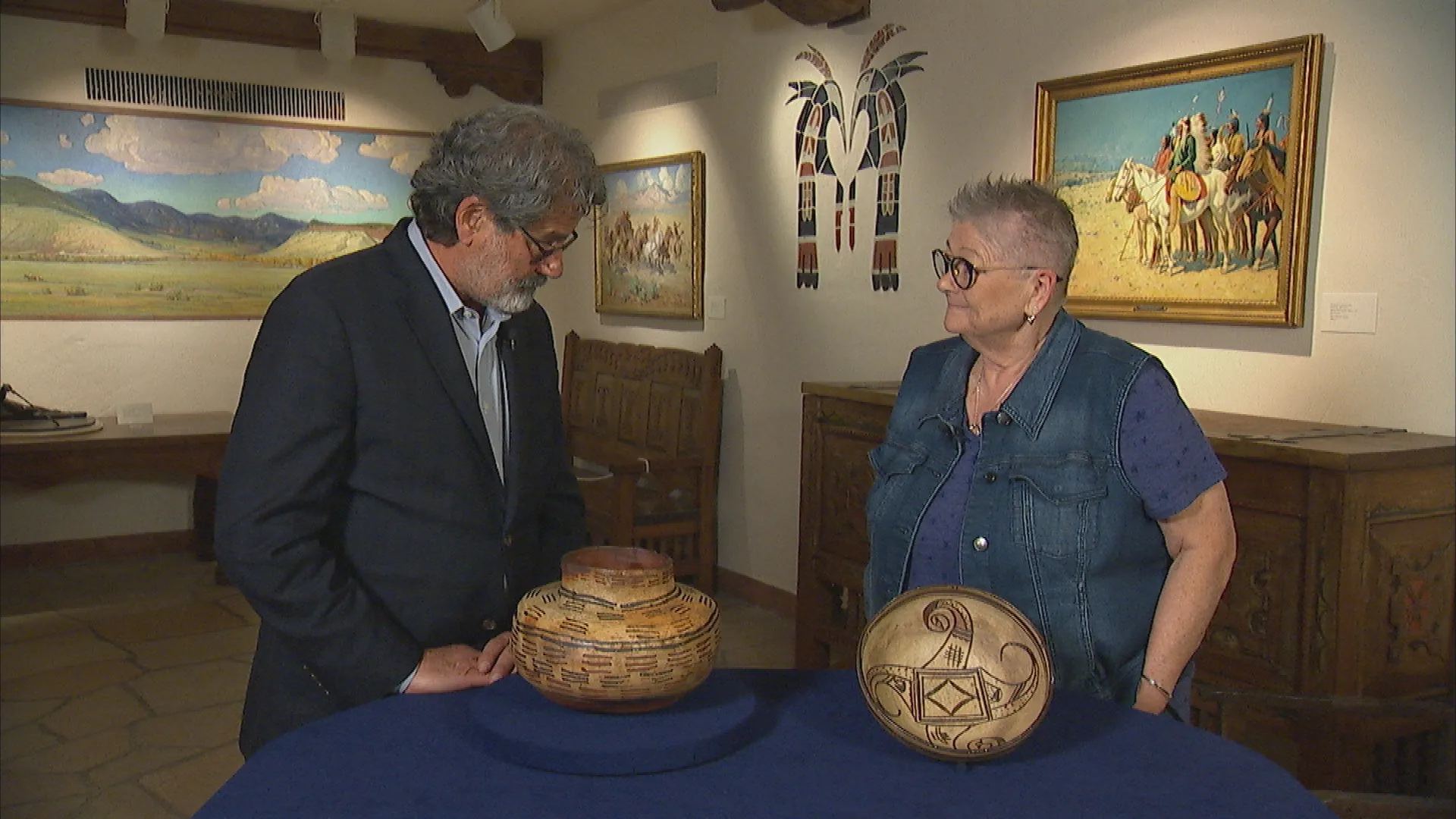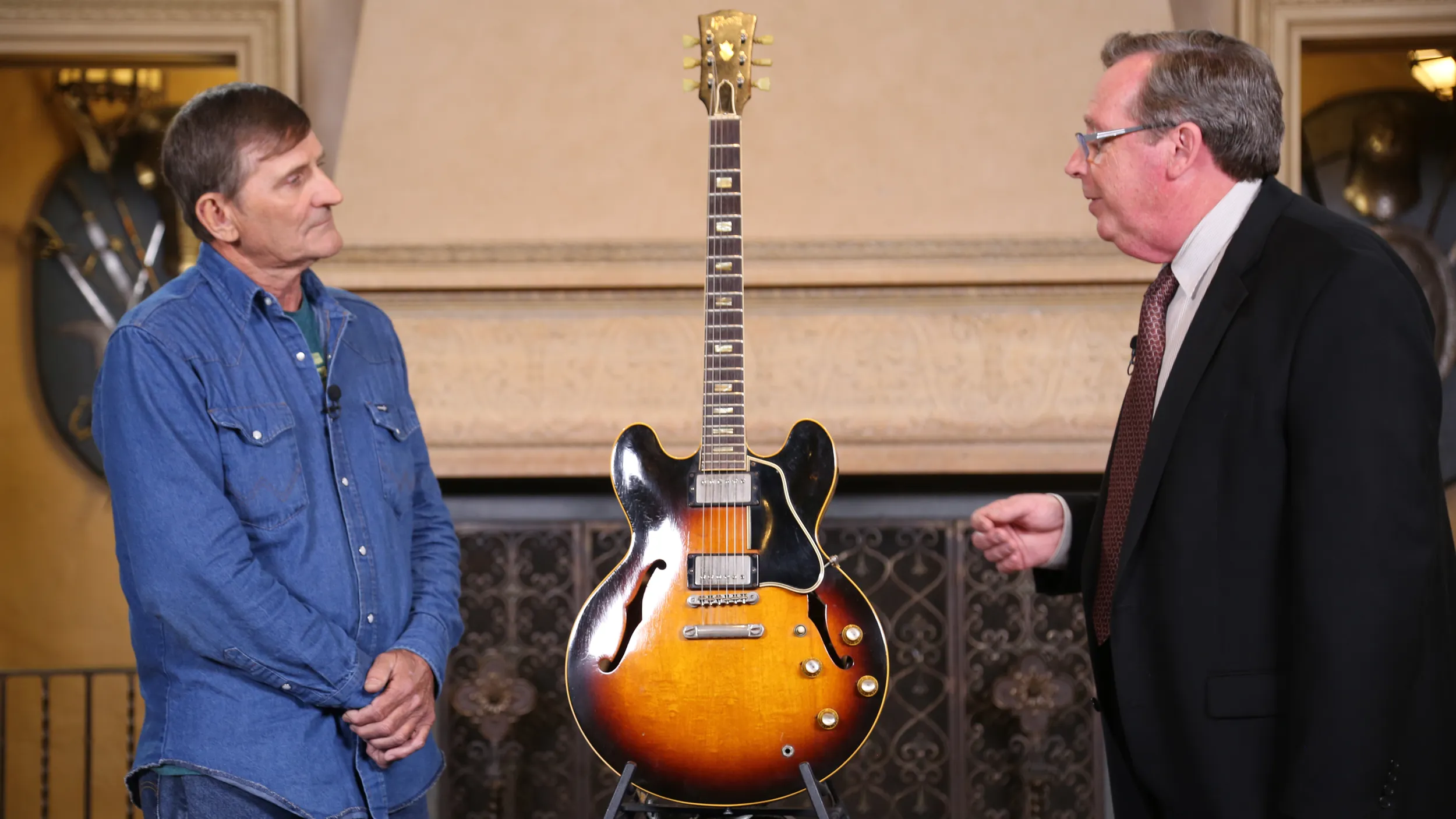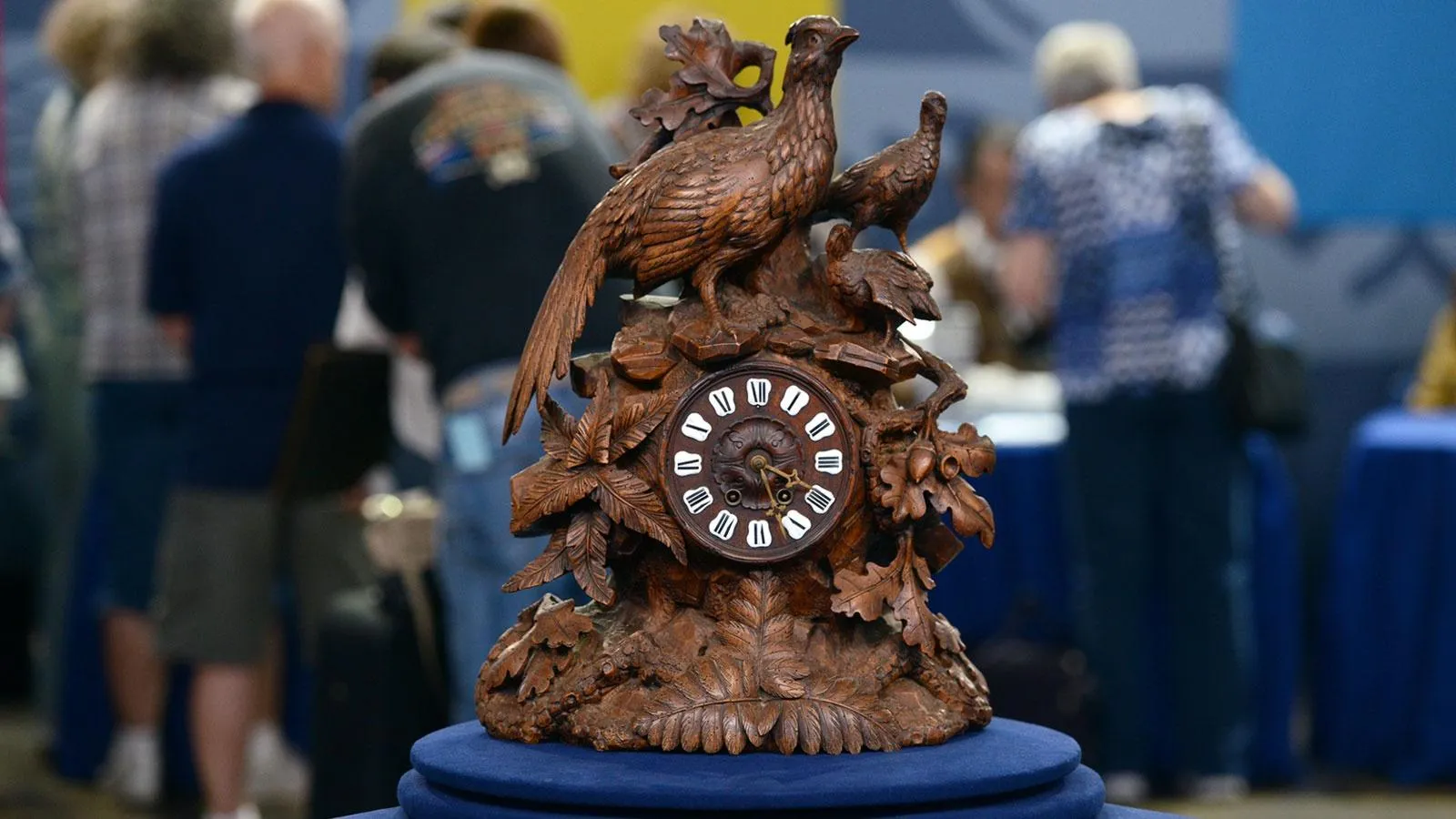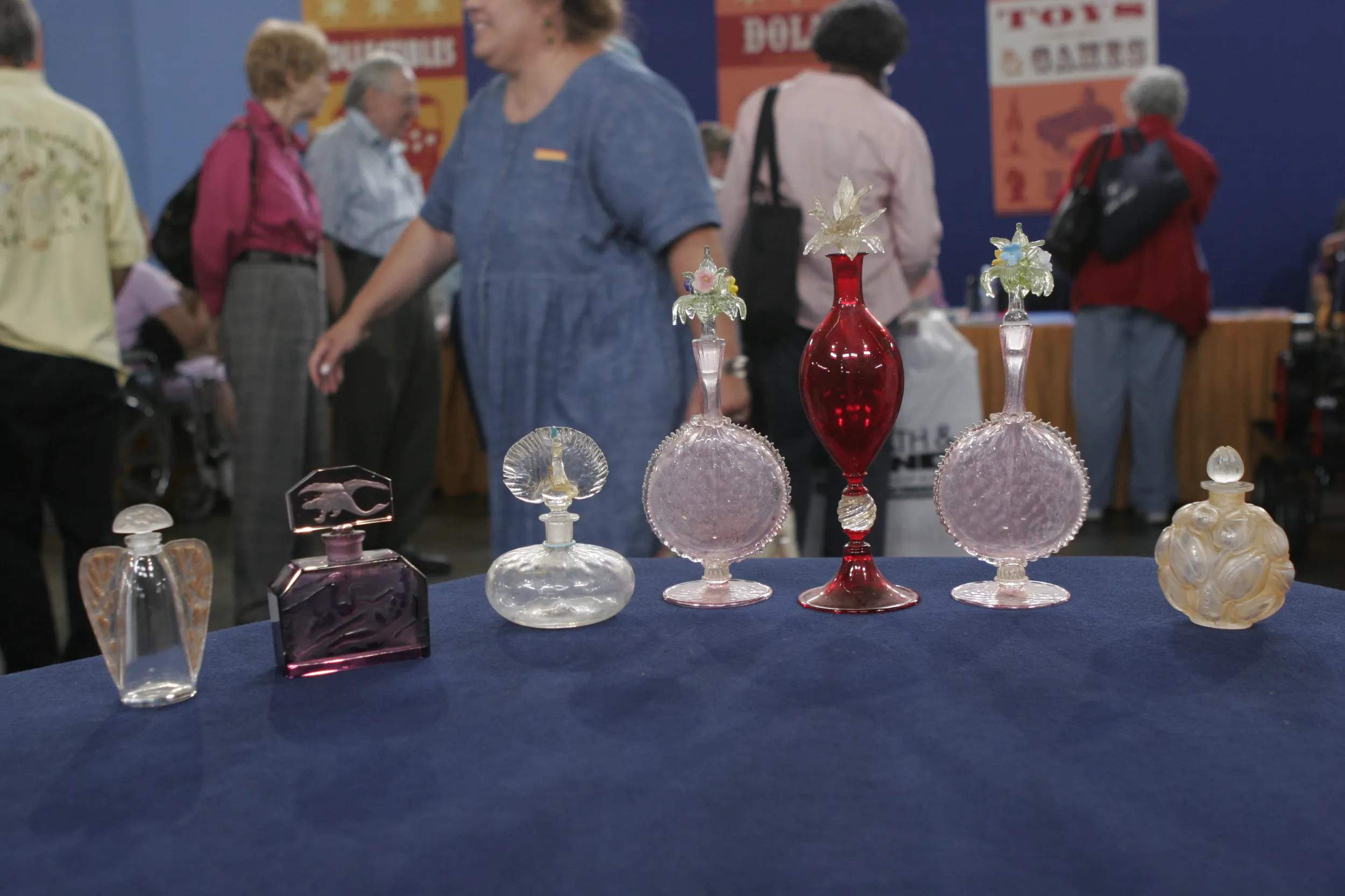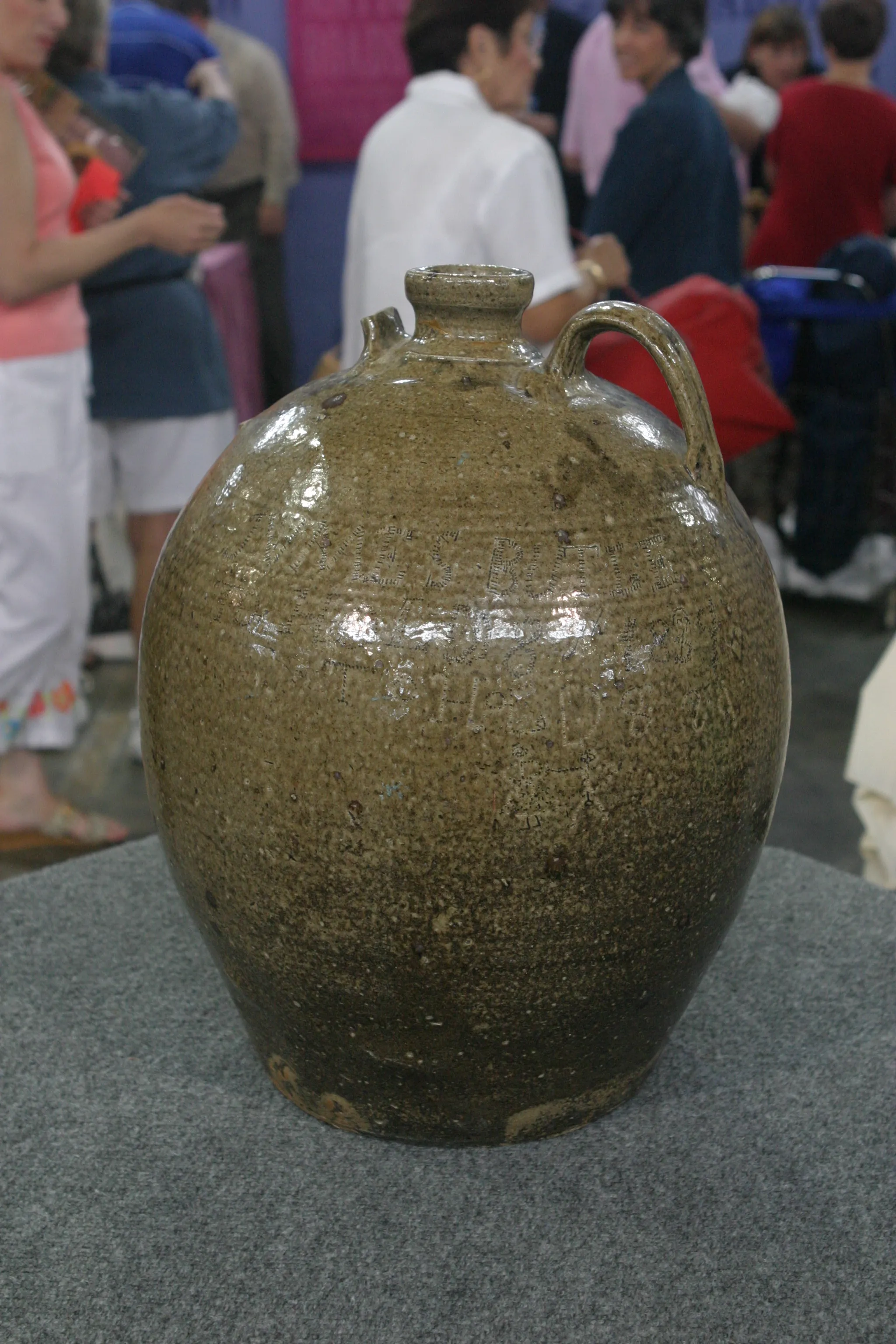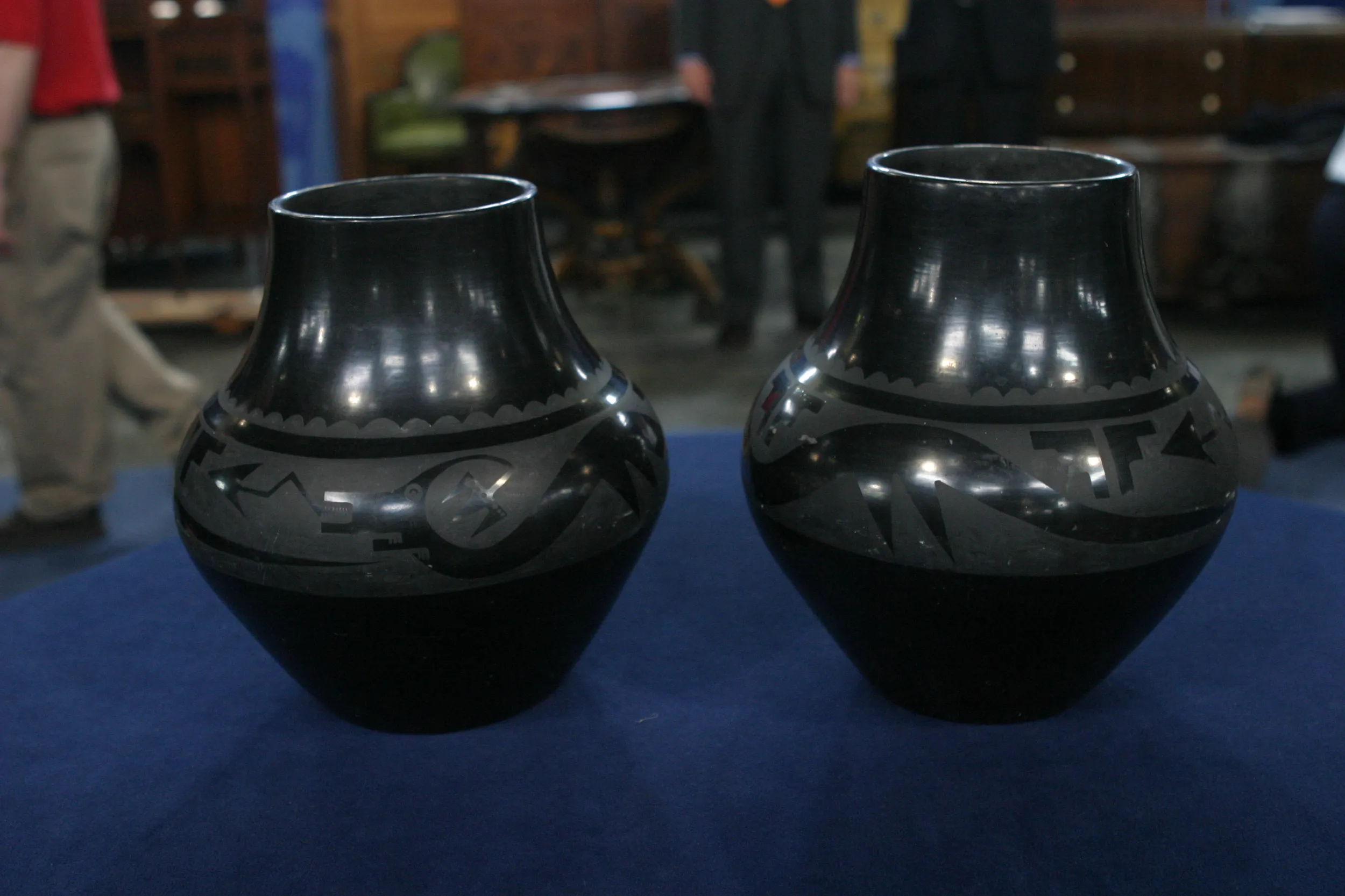GUEST: These pots were my grandmother's. She got them on her honeymoon. They were passed down to her daughter, which is my mother. When my mother passed, I got them.
APPRAISER: They are both Hopi. They represent two generations of Hopi pottery.
GUEST: Oh.
APPRAISER: Um, the bowl closer to you was made around 1890, 1900.
GUEST: Wow.
APPRAISER: It was made at, located, called Hano Hopi. You may have heard of the famous potter Nampeyo. She was the grande dame of Hopi pottery.
GUEST: Oh, wow!
APPRAISER: This is not made by her.
GUEST: Okay.
APPRAISER: But it's made by somebody who surely knew her.
GUEST: Mm.
APPRAISER: And she followed some of the patterns that Nampeyo popularized.
GUEST: Wow.
APPRAISER: The designs on that bowl represent bird-feather wings, and birds are critical to Pueblo culture. Birds associate the Native people with the upper world. In the upper world, we have clouds. In clouds, we have rain. Rain comes down and produces corn. Corn is everything in the Pueblo world.
GUEST: Oh.
APPRAISER: So we must dance for rain. We must pray for rain. We must beg the heavens.
GUEST: Mm-hmm.
APPRAISER: Rain. So, this pot close to you was made for trade to non-Natives. The pot closer to me, it's, it's a wonderful pot, and I haven't seen too many like it. I believe it's from a period called Polacca, Polacca ware. This began, as best I understand it, in the, uh, late 1700s...
GUEST: Mm-hmm.
APPRAISER: ...up until about 1890, 1900.
GUEST: All right.
APPRAISER: It's fairly thick. It's a little cruder, not as elegantly painted...
GUEST: Yeah.
APPRAISER: ...as the pot close to you, and the design here is not typical. The only thing I can think of is that these are rain indications.
GUEST: Okay.
APPRAISER: I can't explain to you why they're not coming straight down. This bowl shows a good deal of wear.
GUEST: Wear, mm-hmm.
APPRAISER: Along the top of the rim. This was made, I'm certain, for Native use. It's a Native pot made to hold, perhaps, water.
GUEST: Okay.
APPRAISER: Somehow, this repetition of the same design, it's just intriguing. I've never seen one quite like it.
GUEST: Okay.
APPRAISER: It's clearly older than the bowl made for the tourist trade.
GUEST: Okay.
APPRAISER: This bowl could be mid-1800s.
GUEST: Oh, wow.
APPRAISER: 1850, 1875. As to value, I, I believe the bowl closer to you, on a retail basis...
GUEST: Mm-hmm.
APPRAISER: ...would be worth in the neighborhood of $1,200 to $1,500.
GUEST: (gasps) (exclaims)
APPRAISER: If you're going to insure it, I would raise it up to around $2,000.
GUEST: Okay, good.
APPRAISER: This bowl's a little more difficult to value. I think, on a retail basis, I would value this at around $3,500.
GUEST: Wow.
APPRAISER: And if I, insuring it, I, I'd go higher. I, you know, perhaps $4,500.
GUEST: Huh!
APPRAISER: It's, it's a wonderful pot.
GUEST: That's amazing. Should I hug you now or later?
GUEST and APPRAISER: (both laugh)
GUEST: That's great. I really appreciate that.

